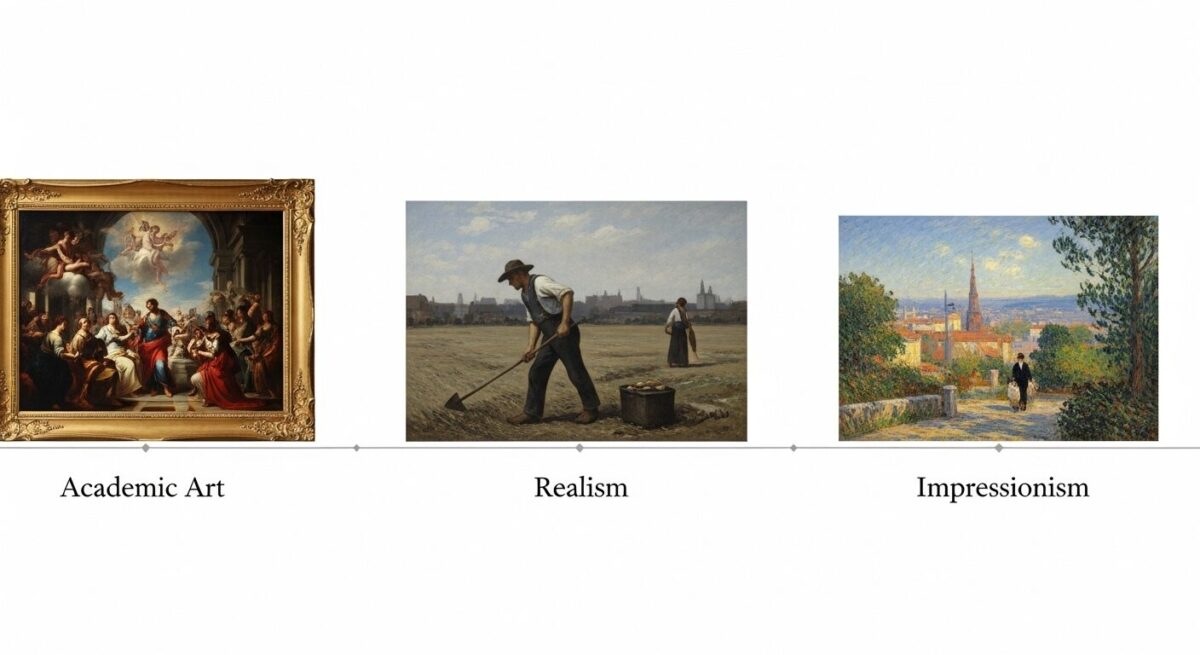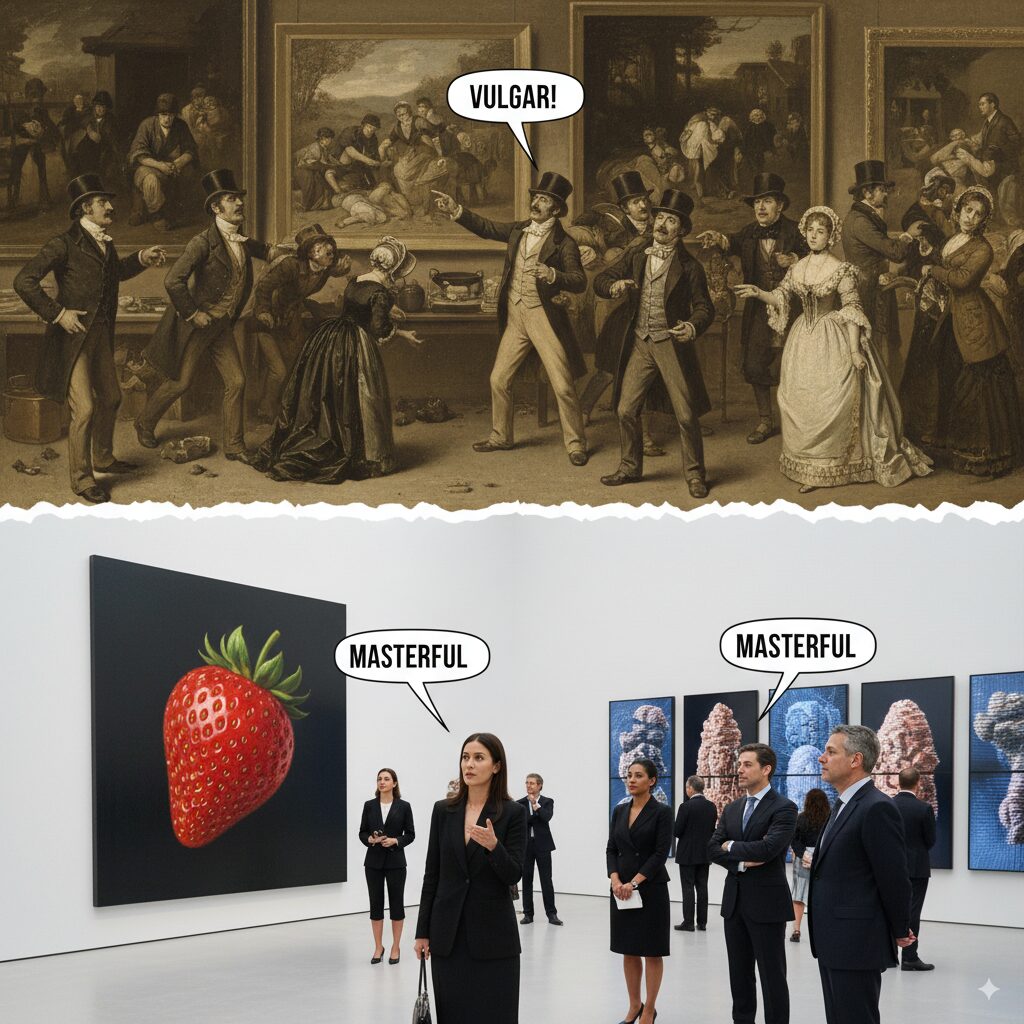Have you ever stood in a museum gallery, staring at a painting and wondering, “Is this Realism Art?” That moment of recognition when you can confidently identify an art movement is like solving a visual puzzle – it transforms your museum experience from passive viewing to active discovery. Learning how to identify Realism Art opens up a whole new world of art appreciation, helping you understand one of the most influential movements in art history that changed everything about what artists could paint and how they painted it.
Key Points Summary:
- What to look for: Ordinary people, everyday scenes, and honest representation without idealization
- Time period: Mid-19th century (1850s-1880s) as the main movement
- Visual clues: Natural colors, detailed textures, straightforward compositions, and social themes
- Main difference: Shows real life as it actually is, not as it “should be” or in an idealized way
- Famous artists: Gustave Courbet, Jean-François Millet, Thomas Eakins, and Winslow Homer
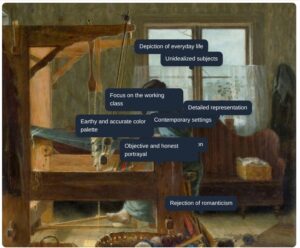
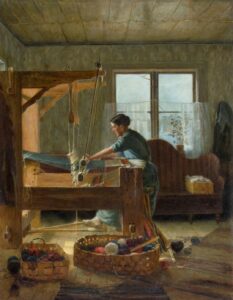
What is Realism Art? Building Your Foundation
Before we dive into how to identify Realism Art, let’s understand what makes this movement so special. Realism is an art movement that attempted to paint human subjects as they really existed in all their flaws, suffering, and imperfections, characterized by subjects painted from everyday life in a naturalistic manner.
The Revolutionary Idea Behind Realism
Imagine you’re an artist in 1850, and everyone expects you to paint gods, heroes, or wealthy nobles in perfect poses. Then along comes Realism Art, which basically said, “Why not paint the farmer in the field, the worker in the factory, or the mother feeding her children?” This wasn’t just a new style – it was a complete revolution in thinking about what art could be.
The movement emerged in mid-19th century France around the 1848 revolutions, as artists began rejecting the dramatic, idealized subjects of Romanticism and Neoclassicism. Born in a chaotic era marked by revolution and social change, Realism revolutionized painting, expanding conceptions of art.
Key Pioneers You Should Know
Understanding the masters helps you recognize their influence:
- Gustave Courbet (1819-1877): The undisputed leader who shocked Paris with paintings of stone breakers and peasants
- Jean-François Millet (1814-1875): Famous for “The Gleaners” and dignified portrayals of rural life
- Édouard Manet (1832-1883): Bridged Realism and Impressionism with modern urban subjects
- Thomas Eakins (1844-1916): Brought scientific accuracy to American Realism
- Winslow Homer (1836-1910): Captured authentic American life, from Civil War scenes to seascapes
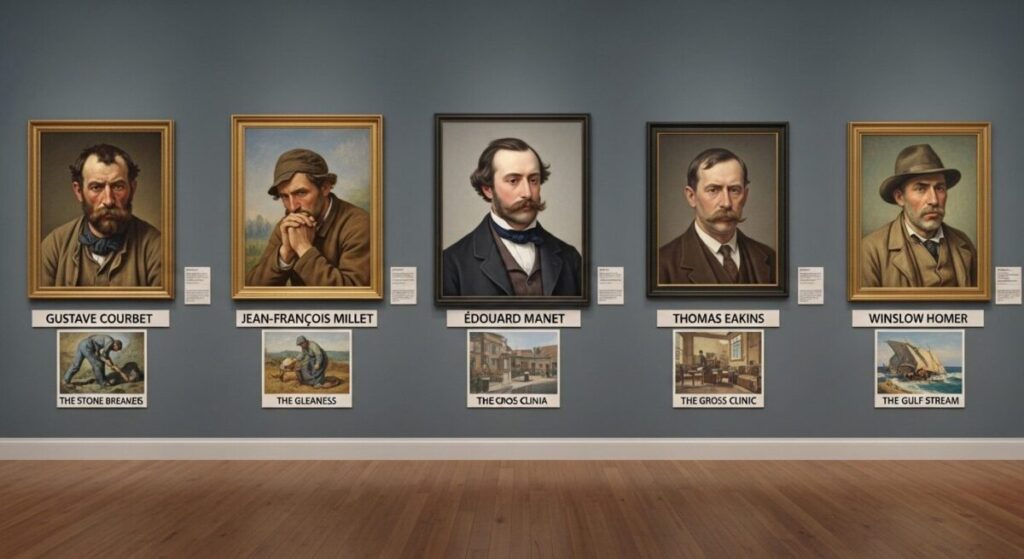
The Defining Characteristics of Realism Art: Your Identification Toolkit
Subject Matter: The Heart of Recognition
What Realists Painted:
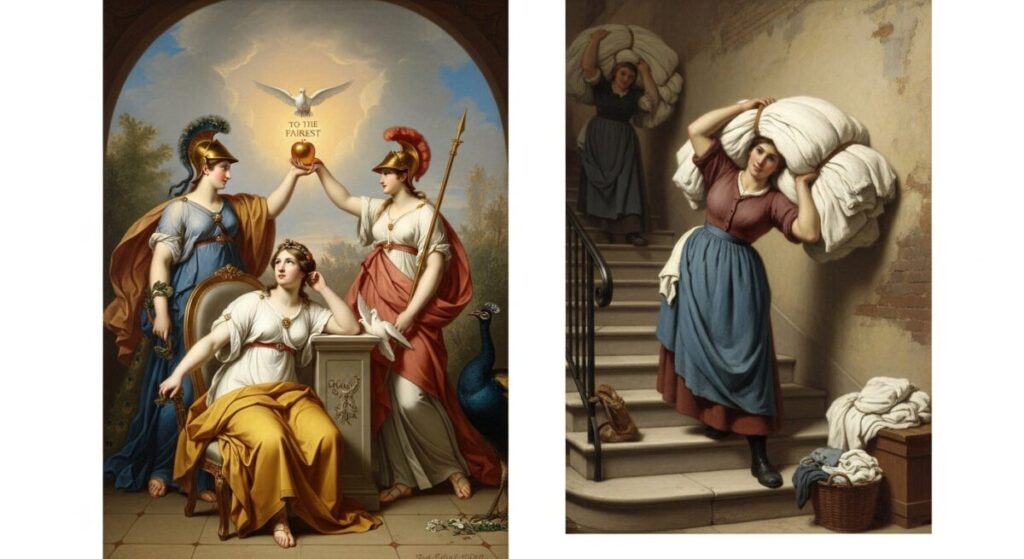
- Everyday people: Farmers, workers, shopkeepers, and middle-class families
- Common activities: Working, eating, resting, traveling, and domestic scenes
- Real locations: Actual villages, city streets, workshops, and homes
- Contemporary issues: Poverty, social inequality, and industrial changes
What Realists DIDN’T Paint:
- Mythological gods and goddesses
- Historical heroes in dramatic poses
- Idealized beauty or perfect bodies
- Fantasy scenes or religious allegories
“I cannot paint an angel because I have never seen one.”
Gustave Courbet, explaining his commitment to painting only what existed in real life.
Style & Technique: The Visual Clues
Understanding how to identify Realism Art means recognizing these technical characteristics:
1. Objective Representation
- Near-photographic accuracy: Details that look almost like a photograph
- Honest portrayal: Including wrinkles, callused hands, worn clothing, and tired expressions
- No romanticizing: Showing poverty, hard work, and social struggles without sugar-coating
2. Meticulous Detail
- Texture reality: You can almost feel the roughness of bark, softness of fabric, or hardness of stone
- Environmental accuracy: Specific lighting conditions, weather effects, and seasonal details
- Facial authenticity: Real expressions showing character, age, and life experience
3. Natural Color Palette
- Earth tones: Browns, ochres, muted greens, and grays dominating the composition
- Subdued colors: Avoiding bright, artificial, or symbolically charged hues
- Realistic lighting: Colors that change naturally with light sources and shadows
4. Straightforward Composition
- Unposed arrangements: Subjects appear naturally positioned, not staged
- Balanced layouts: Comfortable, realistic spacing between elements
- Documentary style: Like a snapshot of real life rather than a formal portrait
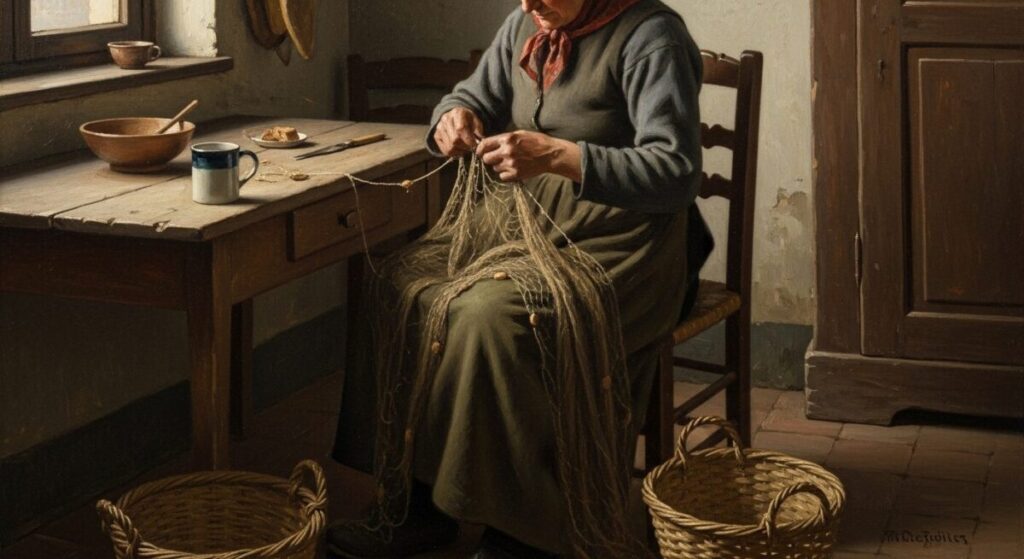
Emotional Tone: Reading the Mood
Realism Art maintains a distinctive emotional approach:
- Detached observation: Artists present subjects without dramatic emotional manipulation
- Dignified treatment: Even humble subjects receive respectful, serious treatment
- Social awareness: Often subtle commentary on working conditions, class differences, or social issues
- Honest humanity: Showing people as complex individuals, not idealized types
Realism Art vs. Similar Movements: Don’t Get Confused!
Common Mix-ups and How to Avoid Them
| Movement | Key Differences from Realism | Quick Identification Tip |
|---|---|---|
| Naturalism | More scientific approach, often with stronger narrative elements | Look for detailed environmental studies and literary themes |
| Impressionism | Focus on light effects, visible brushstrokes, fleeting moments | Check for broken color technique and atmospheric effects |
| Hyperrealism | Modern extreme detail, often based on photographs | Usually contemporary subjects with photograph-like precision |
| Academic Art | Idealized subjects, perfect technique, classical themes | Perfect proportions and heroic or mythological subjects |
Understanding the Progression
Academic Art → Realism → Impressionism → Modern Art
Each movement reacted to the previous one, helping you understand why Realism Art looks the way it does.
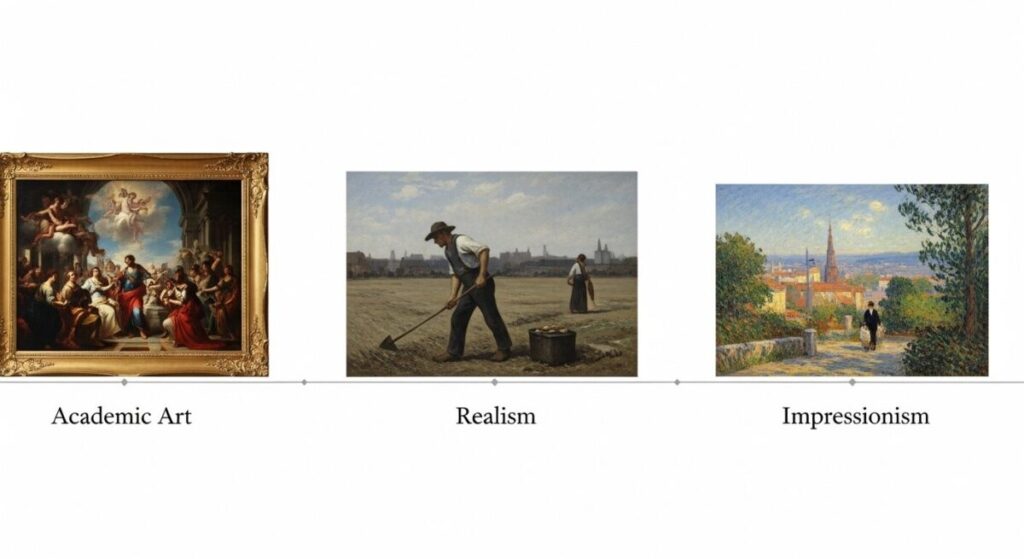
Practical Tips for Identifying Realism Art in Museums
The 30-Second Assessment Method
When you’re standing in front of a painting, ask yourself these quick questions:
Step 1: Subject Check (10 seconds)
- Is the subject ordinary? Farmers, workers, everyday people = likely Realism
- Does it show contemporary life? Modern (for its time) clothing and settings = potential Realism
- Any idealization? Perfect bodies or dramatic poses = probably not Realism
Step 2: Style Analysis (10 seconds)
- How detailed is it? High detail with realistic textures = Realism indicator
- What colors dominate? Earth tones and natural colors = Realism clue
- Brushwork visible? Some visible strokes but not dramatically so = possible Realism
Step 3: Date and Context Check (10 seconds)
- When was it painted? 1850-1900 = prime Realism period
- Where was the artist from? France, America, Russia = major Realism centers
- Museum placement? Often grouped with 19th-century European or American art
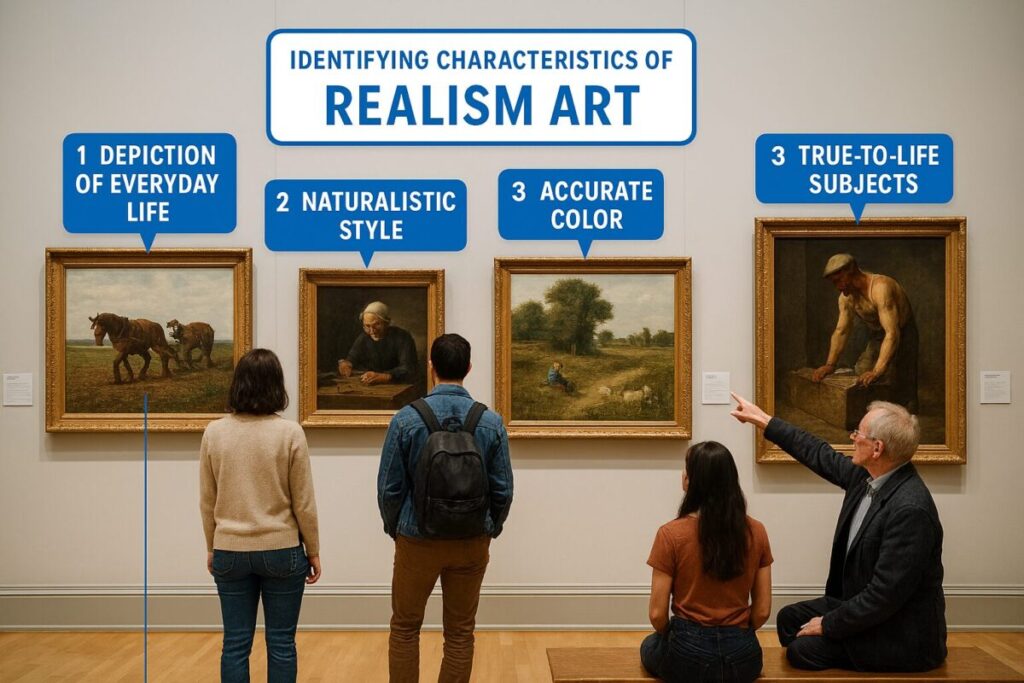
Advanced Recognition Techniques
For the more experienced art enthusiast:
Social Commentary Clues:
- Look for subtle indicators of class differences
- Notice working conditions or living situations portrayed
- Observe relationships between different social groups
Regional Variations:
- French Realism: Often focuses on rural peasants and urban workers
- American Realism: Includes frontier life, Civil War subjects, and industrial scenes
- Russian Realism: Strong emphasis on social criticism and peasant life
Cross-Reference with Famous Artists and Their Styles: Knowing the biographical details helps confirm identification.
Common Misconceptions About Realism Art
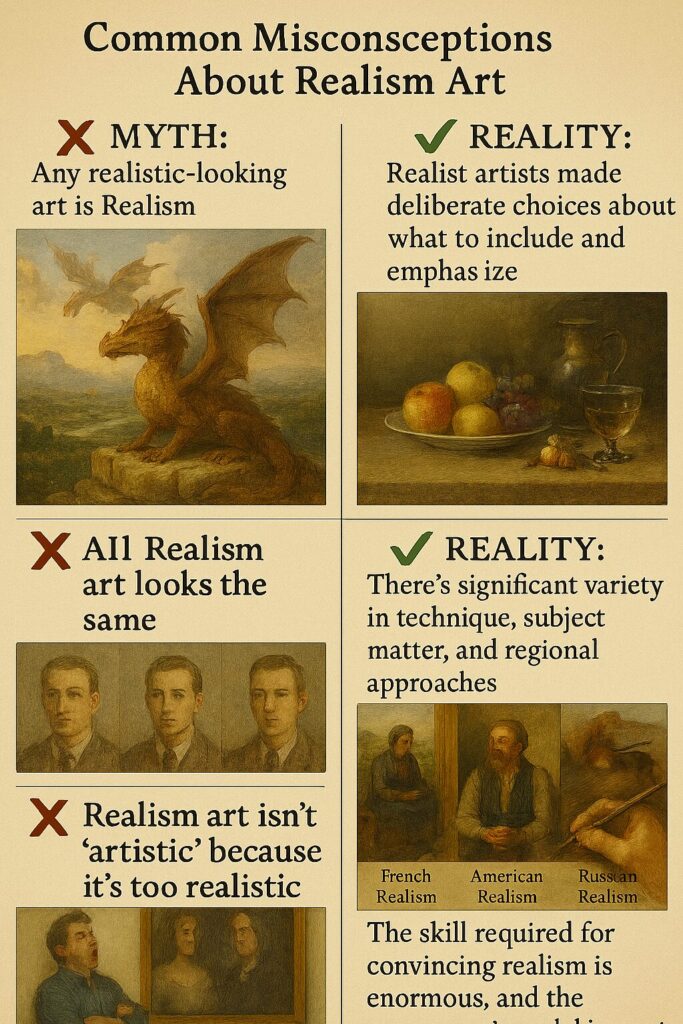
Myth-Busting for Better Identification
❌ Myth: “Any realistic-looking art is Realism” ✅ Reality: Realism is a specific 19th-century movement with particular social and artistic goals
❌ Myth: “Realism Art is just copying what you see” ✅ Reality: Realist artists made deliberate choices about what to include and emphasize
❌ Myth: “All Realism Art looks the same”
✅ Reality: There’s significant variety in technique, subject matter, and regional approaches
❌ Myth: “Realism Art isn’t ‘artistic’ because it’s too realistic” ✅ Reality: The skill required for convincing realism is enormous, and the movement’s social impact was revolutionary
Building Your Realism Art Expertise
Start Your Learning Journey
Beginner Level:
- Visit museums with strong 19th-century collections
- Study painting techniques to understand the skill involved
- Read about the social context of the Industrial Revolution
- Compare Realist works with Academic paintings from the same period
Intermediate Level:
- Learn about different art movements for context
- Study individual artists’ development over time
- Understand regional variations in Realism
- Practice identifying sub-movements within Realism
Advanced Level:
- Research the social and political context of specific works
- Study the influence of photography on Realist techniques
- Understand contemporary applications of Realist principles
- Explore how Realism influenced later movements
Recommended Museum Experiences
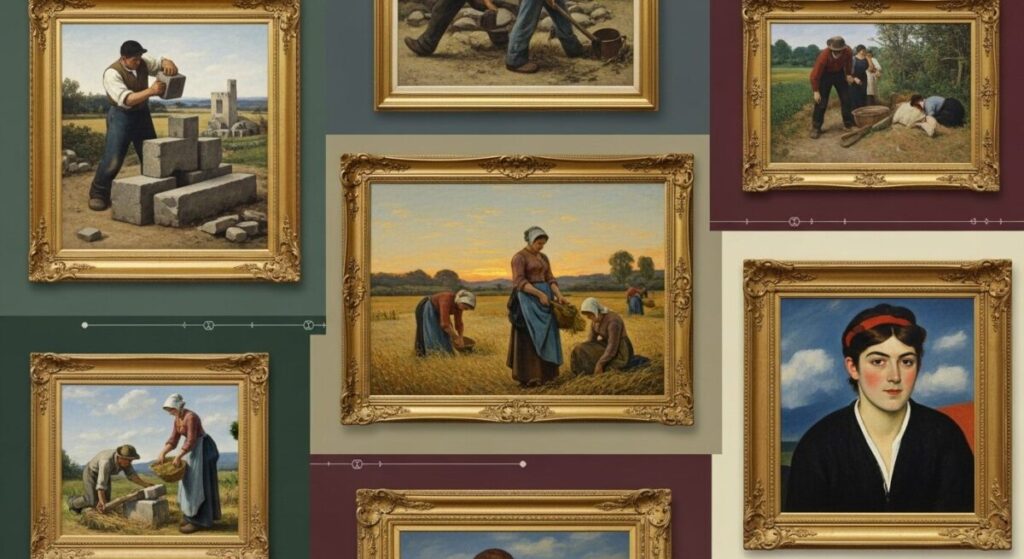
Best Collections for Learning Realism Art:
- Musée d’Orsay, Paris: Unparalleled collection of French Realists
- Metropolitan Museum, New York: Strong American and European sections
- National Gallery, London: Excellent comparative context with other movements
- Smithsonian American Art Museum: Best for understanding American Realism
The fastest way to develop your eye for identifying Realism Art is the “Compare and Contrast” method. When you see a painting you think might be Realism, look for another painting nearby from a different movement. The differences will become immediately obvious: Realism’s naturalistic colors versus Romanticism’s dramatic effects, or Realism’s ordinary subjects versus Academic art’s heroic themes.
Video Recommendation
How to Identify Realism Art: Advanced Techniques
Reading the Cultural Context
Industrial Revolution Influence: Understanding the historical moment helps with identification:
- Factory workers and urban scenes reflect industrial changes
- Railroad and telegraph imagery shows technological progress
- Class tensions visible in juxtaposed rich and poor subjects
Photography’s Impact: The invention of photography around 1840 influenced Realist techniques:
- Sharp detail competing with photographic accuracy
- Snapshot compositions influenced by early photography
- Documentary approach similar to news photography
Regional Identification Markers
French Realism Markers:
- Peasant subjects in rural settings
- Wine harvests and agricultural themes
- Industrial scenes from growing cities
- Political undertones from 1848 revolution era
American Realism Markers:
- Frontier and western expansion themes
- Civil War subjects and aftermath
- Industrial growth in cities
- Democratic ideals in everyday subjects
Russian Realism Markers:
- Strong social criticism and reform messages
- Peasant life and rural hardship
- Historical subjects with contemporary relevance
- Psychological depth in character portrayal
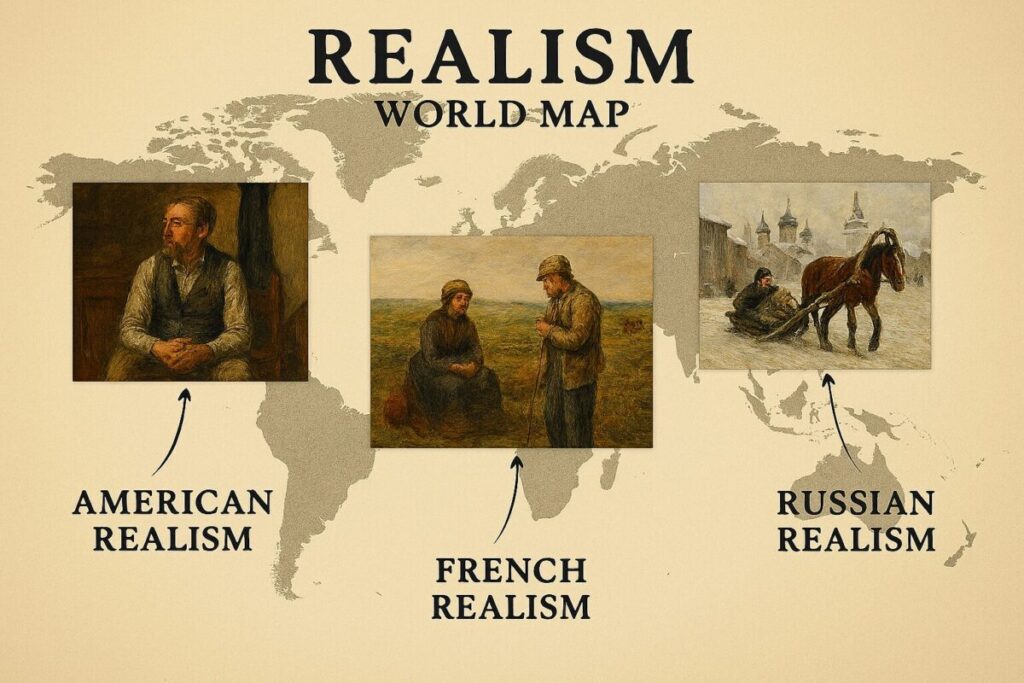
Frequently Asked Questions
What are the main characteristics of Realism Art?
The main characteristics of Realism Art include ordinary subjects from everyday life, honest representation without idealization, natural color palettes dominated by earth tones, meticulous attention to detail and texture, and often subtle social commentary. The movement is characterized by subjects painted from everyday life in a naturalistic manner, focusing on contemporary people and situations rather than mythological or historical themes.
Who are the most famous Realism artists?
The most famous Realism Art pioneers include Gustave Courbet, who led the movement in France with revolutionary works like “The Stone Breakers”; Jean-François Millet, known for “The Gleaners” and dignified peasant subjects; Thomas Eakins, who brought scientific accuracy to American Realism; Winslow Homer, famous for authentic American scenes; and Ilya Repin, who created powerful social commentary in Russian Realism. Each contributed unique approaches while maintaining the movement’s core principles.
How is Realism Art different from Naturalism?
While closely related, Realism Art and Naturalism have subtle differences. Naturalism often takes a more scientific or sociological approach, sometimes incorporating stronger literary or narrative elements. Realism focuses primarily on honest visual representation of contemporary life, while Naturalism may delve deeper into environmental determinism and detailed social analysis. Both movements reject idealization, but Naturalism tends to be more systematic in its approach to documenting reality.
What is a good example of Realism Art?
An excellent example of Realism Art is Gustave Courbet’s “The Stone Breakers” (1849), which shows two laborers doing hard physical work on a roadside. The painting demonstrates key Realist characteristics: ordinary working-class subjects, contemporary setting, honest portrayal of manual labor, natural lighting, and dignified treatment of humble subjects. The work shocked audiences because it gave monumental treatment to people and activities previously considered unworthy of serious art.
When did Realism Art start and end?
Realism Art as a formal movement began in mid-19th century France around 1848-1850, with Gustave Courbet’s revolutionary exhibitions. The movement’s peak period was roughly 1850-1880, though realistic approaches continued evolving into the early 20th century. Born in a chaotic era marked by revolution and social change, the movement gradually gave way to Impressionism and other modern approaches, though realistic techniques remain influential in contemporary art.
How can I tell if a painting is Realism or Impressionism?
To distinguish Realism Art from Impressionism, look at brushwork, subject treatment, and artistic goals. Realism features more controlled brushwork, detailed textures, and focuses on social documentation, while Impressionism emphasizes visible brushstrokes, light effects, and capturing momentary impressions. Realist paintings typically show complete, detailed forms, whereas Impressionist works often appear more spontaneous with broken color techniques and atmospheric effects.
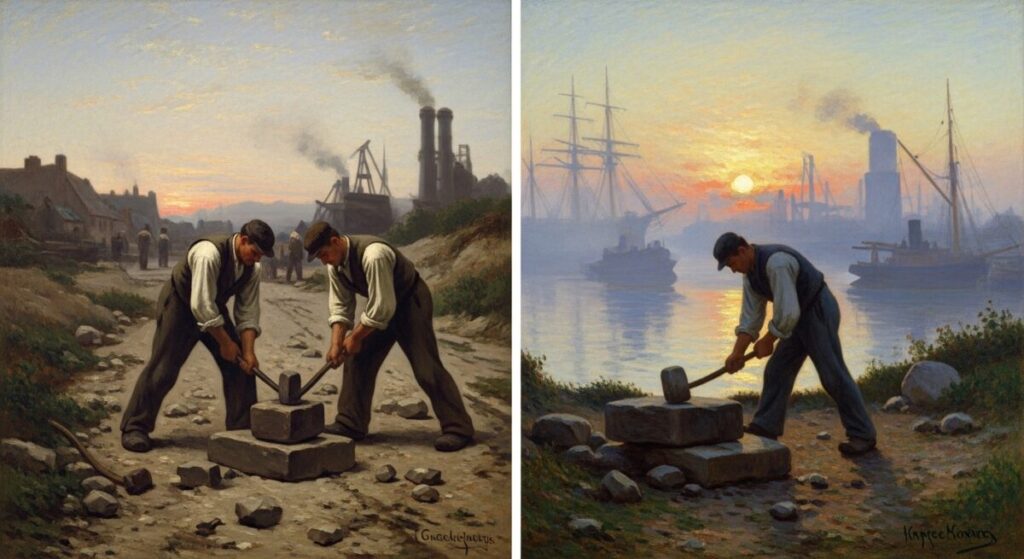
Conclusion: Your Journey to Confident Art Identification
Mastering how to identify Realism Art transforms you from a passive museum visitor into an active art detective. You now have the tools to recognize the movement’s commitment to honest representation, its focus on everyday subjects, and its revolutionary impact on art history. Whether you’re examining Courbet’s bold peasant scenes, Millet’s dignified rural workers, or Eakins’ scientific precision, you can confidently spot the characteristics that define this influential movement.
The next time you visit a gallery, use your new knowledge to identify Realism Art with confidence. Look for those earth-toned palettes, honest facial expressions, contemporary subjects, and meticulous details that reveal the artist’s commitment to showing life as it truly was. Remember, every expert started as a beginner – your growing ability to recognize and appreciate Realism Art is just the beginning of a deeper, more rewarding relationship with art that will enrich every museum visit for years to come.
Additional Resources
Essential Reading
- Realism Movement – Britannica – Comprehensive academic overview
- Realism – Tate Gallery – Clear definition and examples
- The Art Story: Realism – Detailed movement analysis
Online Learning
- What is Realism in Art – Studio Binder – Visual examples and explanations
- Realism Art Movement – Artlex – Historical context and artist profiles
- Minneapolis Institute of Art: The Art of Realism – Interactive learning resources
Museum Collections
- Musée d’Orsay – 19th Century Art – World’s finest Realism collection
- Metropolitan Museum – European Paintings – Strong Realist holdings
- Smithsonian American Art Museum – Best American Realism collection
Artist Resources
- Sparks Gallery: Realism Guide – Contemporary perspective on the movement
- Artsology: Realism Techniques – Technical analysis of methods

